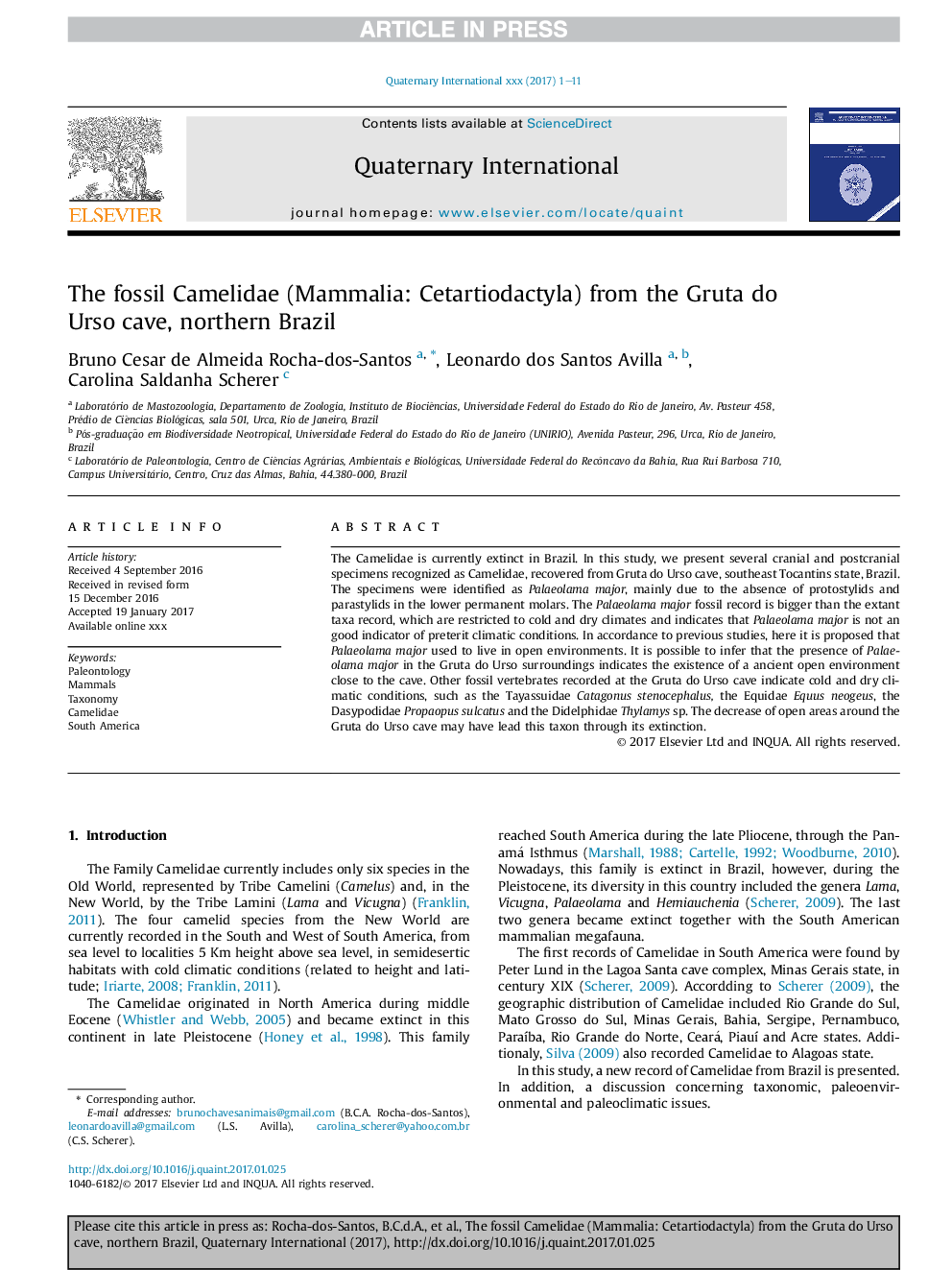| Article ID | Journal | Published Year | Pages | File Type |
|---|---|---|---|---|
| 5113552 | Quaternary International | 2017 | 11 Pages |
Abstract
The Camelidae is currently extinct in Brazil. In this study, we present several cranial and postcranial specimens recognized as Camelidae, recovered from Gruta do Urso cave, southeast Tocantins state, Brazil. The specimens were identified as Palaeolama major, mainly due to the absence of protostylids and parastylids in the lower permanent molars. The Palaeolama major fossil record is bigger than the extant taxa record, which are restricted to cold and dry climates and indicates that Palaeolama major is not an good indicator of preterit climatic conditions. In accordance to previous studies, here it is proposed that Palaeolama major used to live in open environments. It is possible to infer that the presence of Palaeolama major in the Gruta do Urso surroundings indicates the existence of a ancient open environment close to the cave. Other fossil vertebrates recorded at the Gruta do Urso cave indicate cold and dry climatic conditions, such as the Tayassuidae Catagonus stenocephalus, the Equidae Equus neogeus, the Dasypodidae Propaopus sulcatus and the Didelphidae Thylamys sp. The decrease of open areas around the Gruta do Urso cave may have lead this taxon through its extinction.
Related Topics
Physical Sciences and Engineering
Earth and Planetary Sciences
Geology
Authors
Bruno Cesar de Almeida Rocha-dos-Santos, Leonardo dos Santos Avilla, Carolina Saldanha Scherer,
